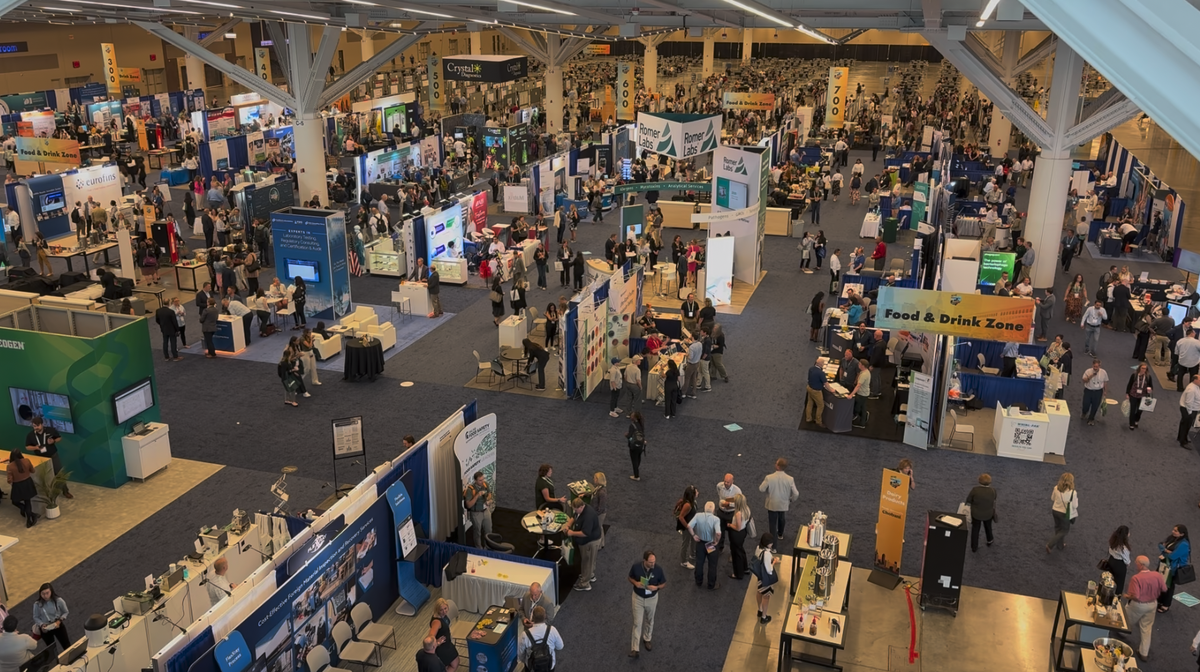
At this year’s International Association for Food Protection (IAFP) Annual Meeting in Cleveland, the message was clear: food safety continues to evolve fast. Across sessions led by regulators, industry leaders, academics, and solution providers, a shared vision emerged. The future of food safety isn't just about meeting regulations or passing audits. It's about fostering a culture of accountability, empowering frontline workers, leveraging smart technologies, and continuously improving the systems we rely on to keep food safe.
Here are the five biggest themes and takeaways from IAFP 2025 and what they mean for your organization moving forward.
1. Food safety culture is the cornerstone, not a checkbox
Speakers at various sessions reinforced the same truth: food safety success begins with culture. A mature food safety culture goes beyond protocols and training. It’s about shared values, trust, psychological safety, and proactive behaviors at every level, from leadership to the front lines.
Organizations that actively nurture a strong food safety culture are more likely to identify and solve problems early, innovate with confidence, and earn customer trust. In contrast, those who treat food safety as a top-down compliance exercise may struggle to see lasting results, even with the best systems in place.
2. Behavior and communication drive real-world results
Many of the most eye-opening sessions explored the human side of food safety, specifically how attitudes, emotions, and behaviors shape outcomes. Behavioral science is proving essential to driving lasting change, and several sessions spotlighted how cognitive biases, risk perception, and even internal communications strategies can make or break food safety initiatives.
For example, “common sense” behaviors—like speaking up, asking questions, or reporting concerns—must be intentionally encouraged and modeled. And when it comes to communication, traditional training alone isn’t enough. Leaders should think like marketers, using storytelling, visuals, and creative messaging to engage teams and reinforce cultural priorities.
Equally important is creating a two-way street of listening and proactivity. No one understands the day-to-day issues and operational concerns better than frontline employees. When organizations foster trust, show appreciation, and actively acknowledge team contributions, employees are far more likely to share concerns and offer valuable insights. Recognition and inclusion don’t just improve morale. They surface the very information needed to drive smarter, faster decisions.
3. Systems, tech, and AI are tools, not replacements for people
Technology continues to play a growing role in food safety, especially in environmental monitoring and risk prediction. Presenters demonstrated how AI and predictive analytics can pinpoint high-risk areas and optimize testing strategies, thereby boosting safety and efficiency while reducing costs.
But across the board, presenters emphasized one thing: AI is only effective when paired with subject matter expertise. Data is powerful, but human insight, context, and actionability remain essential. Smart organizations are investing in systems that enhance, not replace, human decision-making.
4. Strategy requires patience, resources, and continuous improvement
Food safety excellence doesn’t happen overnight. Speakers reminded attendees that building better systems—whether it’s applying HACCP more effectively or elevating culture—requires long-term planning, sustained funding, and strategic alignment.
One example shared: a single hour of training across a major brand can cost millions. But without these investments, gaps persist and incidents recur. Driving meaningful change in food safety culture is not free; it demands thoughtful, intentional investment in both training and resourcing employees.
This means not only providing the right tools and knowledge, but also ensuring teams are supported, enabled, and empowered to implement change effectively. The message was clear. Treat food safety like a strategic business function, not just an operational necessity. And set measurable goals, prioritize based on risk, and revisit plans often.
5. The future demands collaboration, not compliance
Finally, regulators and industry leaders alike called for a shift in mindset, from policing to partnering. The FDA’s “spirit of the law” approach encourages companies to see oversight tools as enablers, not threats. Similarly, organizations must break away from legacy practices and embrace shared responsibility across the supply chain.
This means strengthening relationships between corporate teams and store-level staff, creating space for feedback and adaptation, and designing systems that are flexible enough to meet emerging challenges. The next decade of food safety will be built on transparency, mutual accountability, and cross-functional collaboration.
Turning insights into action with CMX1
The IAFP 2025 Annual Meeting made one thing clear: the future of food safety is human-centered, data-informed, and culture-driven. But putting these insights into action takes more than good intentions. It takes the right tools, systems, and support.
At CMX1, we help food businesses operationalize everything discussed at IAFP, from building a culture of food safety to streamlining compliance, risk mitigation, and continuous improvement. Our platform empowers teams with the tools to manage policies, training, audits, corrective actions, and real-time reporting, all in one place. And by enabling greater visibility and engagement across your organization, CMX1 helps you move from reactive to proactive, from checklists to culture.
Whether you're just starting your transformation or leveling up an already strong program, we’re here to help you navigate the road ahead. Because when it comes to food safety, excellence is never accidental—it’s designed.




